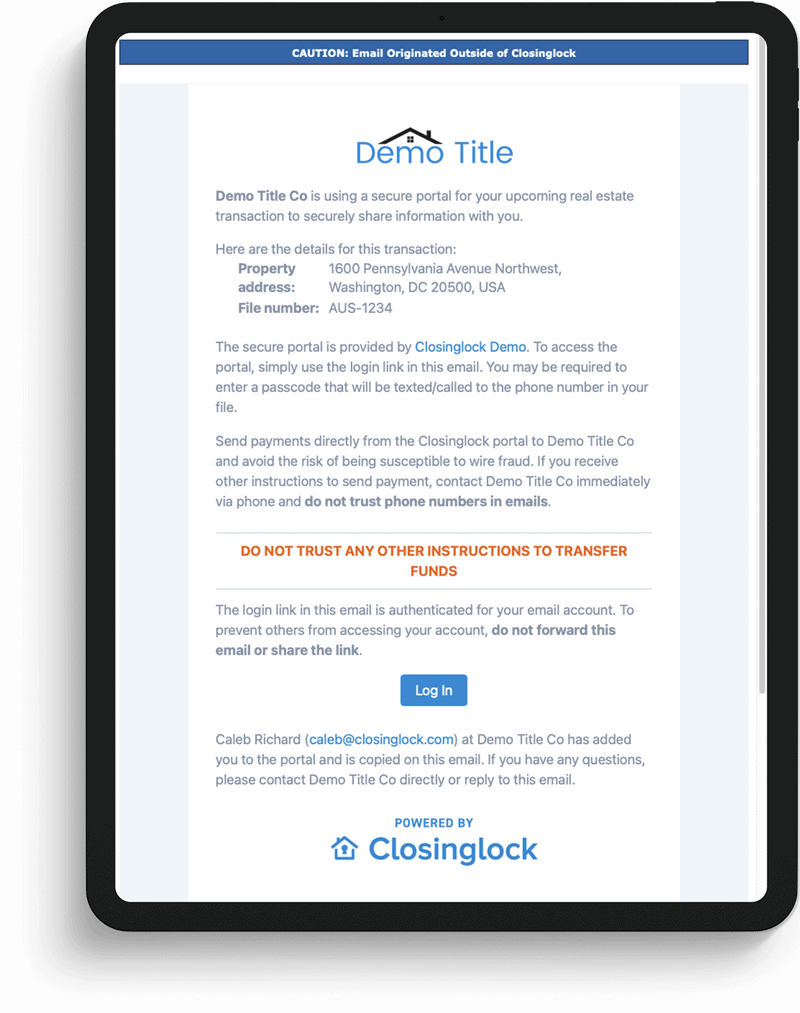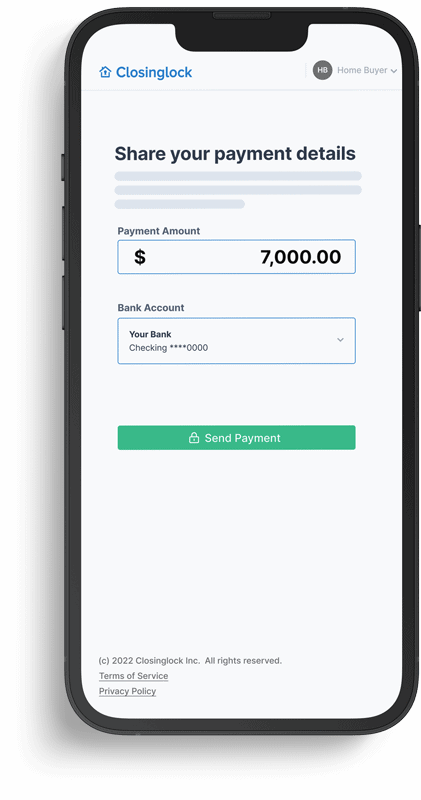
Wire transfer fraud prevention
Exchange wire instructions without the risk of wire transfer fraud.
Closinglock eliminates the possibility of wire fraud with a platform impenetrable to scammers.
In 2023, wire fraud accounted for $3B in reported losses according to the FBI. At Closinglock, we set out to solve this for the end consumer while creating more efficiencies for the title agent or attorney.
These transactions involve life’s largest investment, yet they present so many opportunities for something to go terribly wrong. Having a secure, user-friendly platform to streamline the complexities of a home closing offers protection for everyone involved.
Closinglock’s wire transfer fraud prevention is designed for those in the real estate industry—title companies, law firms, loan officers, escrow officers, title attorneys—as well as buyers and sellers.
When you choose Closinglock, you can:
- Eradicate wire fraud risk for every transaction
- Trust a secure, encrypted portal to protect every customer’s sensitive personal and financial data
- Communicate wiring instructions and trace every step of the process in real-time
- Give buyers and sellers transparency and confidence with an intuitive interface
- Streamline your team’s workflow from contract to close
- Delight your buyers and sellers and grow your business

How it works
Wire transfer fraud protection from Closinglock provides security using 256–bit AES encryption protecting over $220 billion each year in real estate transactions.
This is used to create a trusted and secure portal for communication, storage, and transfer of sensitive information. Closinglock’s solution also consolidates and integrates financial closing tasks into one platform. The result saves staff and clients hours of time per transaction.
Many others have come before Closinglock. With a singular focus on stopping wire transfer fraud, they have fallen short in meeting the bigger need and expectations of their customers. They are fear-focused with no document tracking, no integrations, no process management, and no simple dashboard.

Get the advantage of having protection from wire transfer fraud—and everything you need to streamline your closing process with Closinglock.
When sending wire info:
- Send secure wire instructions from our protected portal
- Eliminate the risk of Business Email Compromise
- Receive a Wire Download certificate for peace of mind
When receiving wire info:
- Banking is automatically verified through our integration with Plaid
- Bank credentials are never stored or sent to Closinglock servers
- Works with more than 13,000 financial institutions in the US, Canada, and Europe
“Closinglock has improved the efficiency of our work flow and provides our clients with peace of mind when it comes to wiring.”
E. Adelaide Crawford
Attorney
Crawford Law Group
Frequently Asked Questions
Why do fraudsters target the real estate industry?
Will Closinglock’s wire transfer fraud protection work with my current software?
Yes, Closinglock’s wire transfer fraud protection is designed to seamlessly integrate with closing and title company software: Softpro, Ramquest, and Resware.
Will my customers be required to download an app to use the portal?
No. Closinglock does not require customers to download any apps or programs in order to access the secure portal for their real estate closing.
What is Plaid?
Plaid offers a secure way to connect to thousands of banking and financial institutions. For Closinglock, this is how banking information is verified so that you keep your wire transfer transaction safe.
Why should I use Closinglock for wire transfer fraud protection?
Not only does Closinglock offer a secure portal that allows closing and settlement companies to share wire instructions and earn some much-deserved peace of mind, but the Closinglock system also sends out automatic email/text notifications, has multifactor authentication, and custom branding. In addition, the Closinglock system uses wire fraud warnings and pop-ups to conveniently and consistently educate your customers throughout the entire process.
Does this add any extra work/time for my customers?
The Closinglock system is simple, intuitive, and easy for your customers to use. With simplicity and ease of use in mind, Closinglock developed a system that allows your customers to gain secure access to wire instructions without having to register, create a password, or download an app. Closinglock’s portal was specifically designed so your customers can securely send their wire instructions and personal documents back to you, along with legally binding electronic signatures.